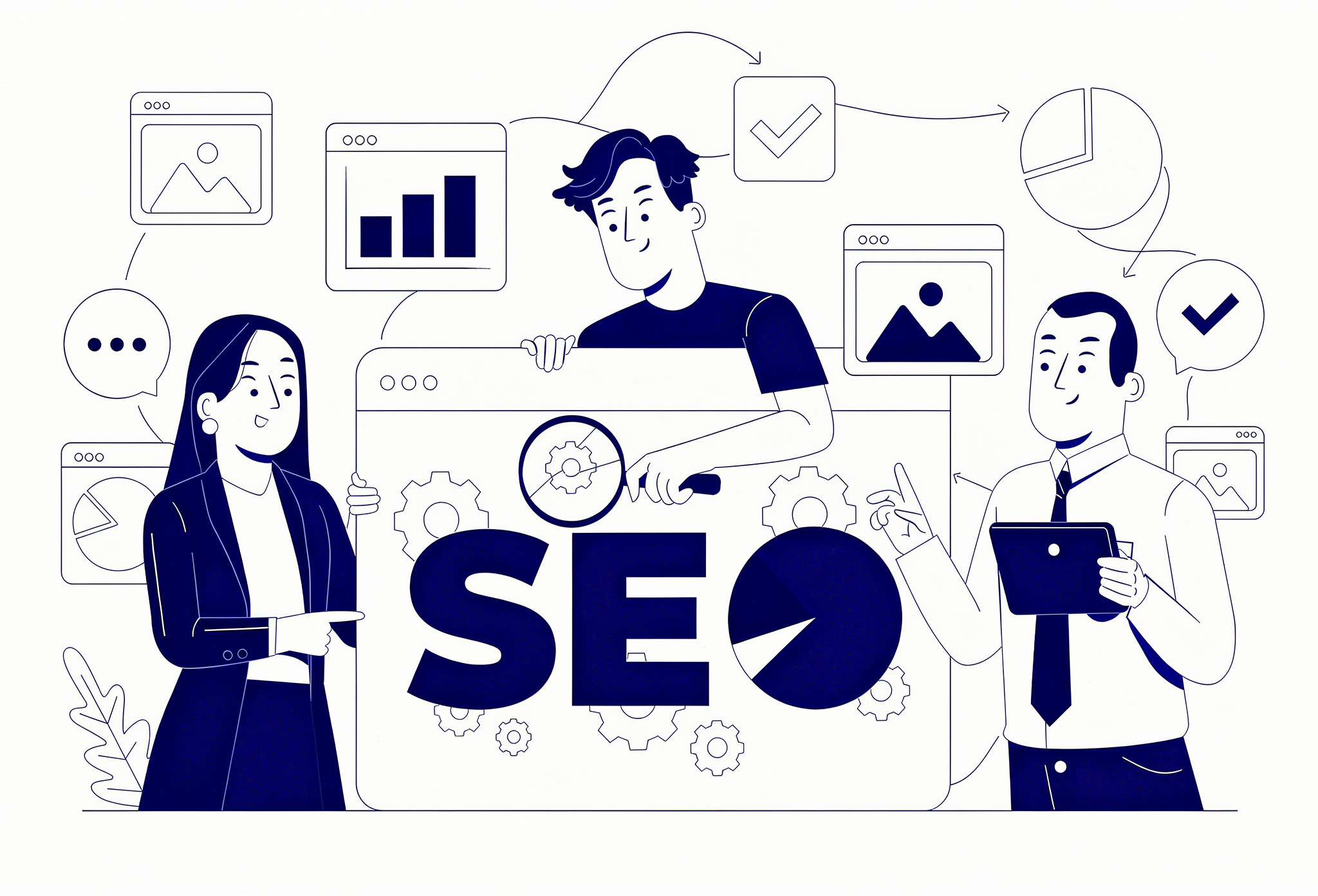Artificial Intelligence (AI) has been transforming various sectors, including the field of blog writing and content creation. It not only makes the process quicker and more efficient but also promises content that is largely indistinguishable from human-written pieces. However, with this comes the question of whether or not Google can detect this AI content, and if it does, will it be penalized?
As the use of AI writing tools becomes more prevalent, it is important to understand the potential consequences and how to avoid them.
The answer isn't as straightforward as one might think. While Google does have advanced algorithms capable of detecting AI-written content, the tech giant's primary concern is not how the content is generated but rather its quality and relevance to the end user. In essence, whether your content is written by Shakespeare himself or generated through AI, Google's major concern is whether it abides by the E-E-A-T (Experience, Expertise, Authoritativeness, Trustworthiness) guidelines for search engine optimization.
Google's concern for content quality
Google's mission is to ensure that users get the highest quality content that caters to their queries efficiently and accurately. They are continually updating their algorithms and guidelines to make sure that the content featured on their search engine prioritizes user needs.
Under Google's E-E-A-T framework, the credibility, accuracy, and utility of content are evaluated, regardless of whether it's human-written or AI-generated. Google's focus has shifted more towards quality assurance of content than its source.
Can Google Detect AI Content?
Yes, Google can technically detect AI-generated content. The machine learning algorithms used by Google analyze various aspects of the content, such as its structure, syntax, coherence, and patterns of repeated phrases, which might suggest it was machine-generated. However, this detection capability doesn't inherently mean that AI-written content faces inevitable penalization.
Suppose the AI-written content adheres to quality measures and provides valuable information to users. In that case, it stands a good chance of not only slipping through Google's algorithm for detecting AI content but also being positively recognized by the ranking systems.
Google's efforts in detecting AI content
You might be wondering how Google detects AI-generated content. Fundamentally, the AI tools that generate content use sets of pre-defined rules and structures in language and text construction – a pattern. By leveraging advancements in Natural Language Processing (NLP), Google's algorithms can recognize these patterns and structures typical to machine-generated text. For instance, an AI tool might repeatedly use certain phrases or have a consistent sentence structure across a piece of content.
This lack of natural variance and nuance that would otherwise be present in a human-written article is often a dead giveaway, making it important to avoid using AI-generated content for SEO purposes.
Moreover, AI tools are trained through large datasets, and they generate content that mirrors these training sets. Google, having indexed enormous amounts of content from different sources, can identify rehashed or highly similar clusters of text that indicate AI participation.
However, it's pivotal to note that Google's primary concern is not merely detecting and punishing AI content; it's ensuring overall content quality that provides real value to the end-user.
The challenge of differentiating AI and human writing
While Google's ability to detect AI-generated content has improved, uncertainty persists as AI tools evolve to generate increasingly human-like text. As AI technology becomes more sophisticated, the line between human-generated and AI-generated content becomes blurry.
Notable breakthroughs in AI models, such as GPT-3 developed by OpenAI, specifically ChatGPT, can generate content almost indistinguishable from human writing.
This advancement presents two significant issues. First, rooting out low-quality AI-driven spam content becomes more challenging as these sophisticated models effectively mimic human language patterns. Second, it can be an arduous task for Google's algorithms to determine whether high-quality, enjoyable content was human-written or produced by automation through advanced AI models.
Reflecting on these challenges, Google has been shifting its focus from solely identifying AI-generated content to emphasizing the quality, originality, and relevance of the content, regardless of its origin.
5 Tips to Avoid Penalization from Google AI Detector
Whether you're using AI tools to generate your content or writing it all yourself, there are ways to ensure that your content avoids being penalized by Google.
By following certain guidelines that revolve around enhancing user experience, quality of content, and adherence to the E-E-A-T criteria, you can increase your blog’s chances of escaping Google's wrath and even excel in the SERPs (Search Engine Result Pages) through strategic use of keywords.
Let's explore five invaluable tips for creating AI-assisted content that Google and, importantly, your users will appreciate.
1. Improve your writing prompts
The key to having your AI tools generate content that comes off as more human starts right from the moment you provide your prompts. Providing clear, well-thought-out prompts that incorporate a specific narrative or style can guide the AI to generate text that appears less machine-generated and more natural.
For example, instead of giving bland, generic instructions such as "Write about the benefits of yoga," you could be more detailed and say, "Write a friendly conversation between two people discussing the benefits they've experienced from incorporating yoga into their daily routines."
Importantly, try adding some emotional or creative context to your prompts. This allows the AI to draw from its large corpus of data to create unique text that mimics human emotion and creativity. Improved prompts can go a long way in generating content that reads more naturally, promptly boosting its quality and, subsequently, its E-E-A-T score.
2. Focus on the end user and their needs
Any content, whether written by a human or generated by an AI, should keep the end user at the forefront. An in-depth understanding of user intent and delivering content that satisfies this intent is pivotal for better ranking in Google search results. To ensure that the AI-generated content resonates with your audience and provides genuine value, use insights from customer interviews, surveys, and market research to inform the creation process and create the best content for your target audience.
Another effective tactic is to utilize AI tools that can create persona-driven content. These tools create content that is not just informative but also personalized and highly relevant to the target demographic.
Remember, Google's primary concern is offering its users the most valuable search experience. Therefore, generating AI content that is helpful, engaging, and tailored to the needs of the end user is a surefire way to avoid penalties.
3. Emphasize quality and adherence to E-A-T guidelines
Focusing on quality is non-negotiable when it comes to content creation, especially pertaining to AI-generated content. Adherence to Google's E-E-A-T criteria requires content to be well-researched, original, and informative. Essentially, your content, whether written by you or an AI, ought to demonstrate:
1. Expertise: Ensure that your content effectively communicates mastery of the subject matter.
2. Authoritativeness: Build credibility with high-quality inbound and outbound links, mention authoritative sources, and promote social proof.
3. Trustworthiness: Provide verifiable information, include clear 'About Us' and 'Contact Us' pages, protect user data, and maintain transparency about your website’s owner or publishers.
4. Experience-driven: Ensure that the creator or guiding hand of the content has relevant experiences that align with the topic to add authenticity and depth.
As AI tools are only as effective as the instructions given and the data sets they draw from, make sure to guide the tool towards creating content that is as in-depth, informative, and reliable as possible—thus ensuring its relevance, value, and, consequently, its compatibility with E-E-A-T.
4. Combine human editing with AI-generated content
The concept of human-in-the-loop AI can be highly beneficial when leveraging AI tools for content creation. While AI does a formidable job creating content, it lacks human sensibilities, creativity, and personal touch that can often make a world of difference in enhancing the quality of content.
Coupling AI’s speed and computational power with a human's creativity, context understanding, and intuition can be the key to creating high-quality and authentic content. A human editor can breathe life into AI-generated content by providing suitable context, incorporating creativity, and ensuring the content effectively answers users’ queries.
Furthermore, while AI tools may excel at generating coherent sentences and grammatically correct text, a human's knowledge and intuition in choosing, arranging, and presenting information are indispensable for creating engaging and persuasive content. Therefore, using AI to generate first drafts and then editing them with human finesse and intuition can result in more engaging, high-quality content that Google and your audience will love.
5. Utilize different AI tools and approaches
Experimentation is another critical part of optimizing your AI content creation efforts. One important step in this regard involves exploring various AI tools. Each tool offers unique features and capabilities. Exploring multiple tools and methodologies allows you to assess which tool best aligns with your content strategy and audience preferences.
For instance, some AI tools are better suited for creating blog articles, while others excel at generating ad copy or product descriptions. Some tools have advanced natural language processing capabilities, while others might offer more specific context-based content creation.
Moreover, some of the newest and most advanced AI models such as GPT-3 offer greater diversity and complexity in their language patterns, making it harder for Google or anyone else to detect that the content is AI-generated.
Remember, the goal here isn’t to trick Google but rather to use the AI tools most effectively to create valuable and engaging content for your audience.
E-E-A-T in AI content: What Does it Mean?
E-E-A-T (Experience-Expertise, Authoritativeness, Trustworthiness) plays a crucial role in AI-generated content. With Google's latest Helpful Content Update, there's been a significant focus on ensuring that content provides value to users, prioritizing experience, expertise, authoritativeness, and trustworthiness (E-E-A-T).
This move reflects Google's ongoing commitment to enhancing user experience by promoting high-quality, helpful content over content designed primarily for ranking purposes. Incorporating E-E-A-T principles in AI content creation enhances credibility and boosts search rankings.
Emphasizing the expertise of the content creator, establishing authoritativeness in the field, and maintaining trustworthiness with accurate information are fundamental for improved visibility and user trust. Google's algorithm values E-E-A-T to ensure the best user experience and promote trustworthy content.
Under Google's E-E-A-T guidelines, content should demonstrate Expertise, Authoritativeness, and Trustworthiness.
But what does it truly mean?
Expertise refers to the extensive knowledge or skill in a particular field that the content creator demonstrates. It is showcased through well-researched, in-depth, and informative content.
Authoritativeness is the credibility of the website or the author in terms of the subject at hand. It is reinforced through high-quality backlinks, verified sources, author bylines, and positive user engagement.
Trustworthiness entails the reliability and authenticity of the website and its content. A secure site, clear information about the business, easy-to-find and professionally designed pages, and adherence to ethical practices establish this quality.
These guidelines apply to both human and AI-generated content. For AI-generated content, you should aim to ensure your AI tool is well-guided to produce content that adheres to these metrics. A human editor's review and touch can further ensure the content ticks all these boxes.
How to Create content that aligns with E-E-A-T guidelines
Creating AI-generated content that aligns with Google's E-E-A-T guidelines involves a three-pronged approach:
- Feed Accurate Data: Ensure that your AI tool has access to high-quality, accurate, and current data. This guarantees that the generated content retains this authenticity.
- Advanced AI Models: Deploy advanced AI models like GPT-3, which can generate more human-like and nuanced content. They can also create theme-specific or audience-specific content.
- Human Involvement: Inject human creativity, experience, and touch for finer control, added context, and enhanced quality.
With careful guidance, your AI tool can help you create content that meets the E-E-A-T guidelines, thus increasing its chances of fairing well in Google's search rankings.
Use Scalenut AI Content Detector and Humanizer

Alt text: Sample ChatGPT text spotted as AI generated by Scalenut Content detector
While manually removing AI content is an ideal option, it is time-consuming and challenging. That’s why AI Content Detector and Humanizer like Scalenut helps in converting you AI text to human like narrative.
It humanizes AI-generated content, giving it a more human touch by employing sentence structures and stylistic patterns. It takes a few seconds to completely rewrite the text and humanize it with more authentic and original words. The tool removes the repetitive words, phrases and sentences that sound irrelevant. It further uses citations and links important insights to make the content more authentic.
The best part is that Scalenut humanizer is completely free to use and is highly accurate at humanizing text. So, whether you want to humanize or paraphrase the text, Scalenut excels at both. Try Scalenut AI content detector and humanizer to convert AI text into human-like content.
Conclusion
AI content generation comes with its own set of challenges and considerations. Google can indeed detect when content has been generated by AI. However, Google doesn't necessarily discriminate between human and AI-generated content—its primary concern is the quality of the content. Adherence to the E-E-A-T guidelines forms the cornerstone of any successful content strategy.
The use of AI in content creation is here to stay. When guided properly, AI tools can generate high-quality content that aligns with the E-E-A-T criteria and provides valuable and relevant information to the end-users. Blending advanced AI capabilities with human creativity and insight provides the best of both worlds — efficiency, accuracy, and the personal touch that only a human can bring.
As content creators, our primary task is to create content that satisfies user needs and adheres to Google's guidelines. As long as we hold these principles paramount, we'll successfully navigate the AI revolution in content creation and continuously generate engaging, original, and valuable content.
Frequently Asked Questions
How can I ensure my AI-generated content is high-quality?
For high-quality AI content, you must provide clear and elaborate prompts to your AI tool. Always focus on the end user’s needs while creating content. Lastly, even though the initial draft is AI-generated, it must be reviewed and refined by a human editor.
What are some best practices for avoiding Google detection and penalties?
To avoid being penalized by Google, maintain adherence to E-E-A-T guidelines. Combine human editing with AI-generated content to enhance its quality. Experiment with different AI tools to find what works best for your needs. Always aim for quality content that caters to user intent.
Is it ethical to use AI-generated content for my website?
Yes, it is completely ethical to use AI-generated content as long as it provides value to the end user, is honest about its source (when asked), and follows Google's guidelines. Using AI just to manipulate search rankings without offering value is what Google frowns upon.
Are there any tools available to check if my AI content is detectable by Google?
You can use AI detectors like OpenAI's AI Classifier or Content at Scale's AI Detector to test out your AI-generated content. These tools analyze your content and give a score indicating how likely it is to be detected as AI-written.



.webp)




.webp)


